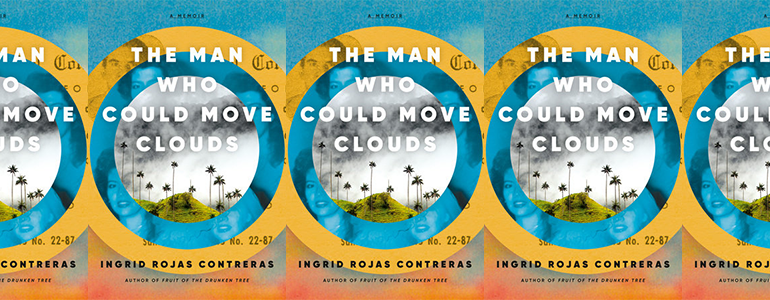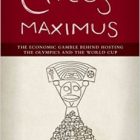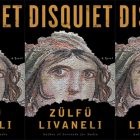Temporality and Memory in The Man Who Could Move Clouds

The Man Who Could Move Clouds
Ingrid Rojas Contreras
Doubleday | July 12, 2022
“The biggest thing I have learned all these years, Mami confided in a low voice, is that nobody wants the truth, but everyone wants a story.” And what a story Ingrid Rojas Contreras’s The Man Who Could Move Clouds is, intertwining family relationships and legacies, political conflicts and oppressions, and the expansive realm of healing, identity, and magic into a magnificent, mesmerizing memoir.
After a bike-meets-car accident in her early twenties from which she suffered a concussion, Rojas Contreras is rendered a temporary amnesiac, paralleling a similar experience that happened to her mother, Mami, in Colombia. When she was eight, Mami had a well accident and stayed in her coma for months. She was treated by her father Nono, who was a curandero—folk healer or shaman, depending upon your definition—and the cloud-shifting man of the title.
As a noted (and traveling) curandero, Nono was a keeper of “secrets”: the ability to communicate with the dead, heal the sick, and see the future. Out of her siblings, Mami was the one most like him, and after recovering from her coma, she also began to see ghosts, later developing the ability “to appear in two places at once.” It was a considered a curse for a woman to have these gifts, but Mami ultimately accepted and embraced her destiny, recognizing that “losing sight of your power is dangerous.”
Years later, Rojas Contreras must accept and embrace the same. When she suffers a concussion, she loses her memory: she somehow convinces her loved ones that she is well, even though she is in “a memory lagoon. A place of no time, gray suspension, dissociation,” Once this loss is impossible to hide, she finally tells her boyfriend and family the truth, and they help her regain her memories.
Family and how it shapes who you are is the guiding principle in the memoir, and while reading, it’s hard not to consider your own experience. As an immigrant child, I grew up working at our small family clothing store business, where double-knit polyester reigned supreme. Rojas Contreras had a far more fascinating upbringing, but as mine did to me, her childhood shaped who she was meant to be.
Also woven throughout the memoir is the complex politics of Colombia and its impact upon the country, especially the diversity of cultures—indigenous, Spanish, and more—and the friction between stories told from generation to generation, compared to what is written and codified as “official” history. “The histories and stories of a people are a mirror—they tell how and when and where and why a people lived. No matter the year or the hour, empire will always seek to destroy the mirrors in which it does not see itself.” This history, though important scenery and groundwork, adds shading to the compelling primary story. It strikes the heart, especially today: reflecting upon our own national histories and narratives, what they mirror, and how so many are committed to denying them, erasing them.
In the end, the memoir is exploring both personal and communal memories. Rojas Contreras writes: “All stories begin and end with memory. Personal memory that goes with the crack of a skull on rock, on pavement. Cultural memory oppressed and re-dressed in the foreign clothes of Catholicism. Ancestral memory hidden for centuries from occupying powers—and in secrecy becoming something new, a bifurcated thing.” It seems that there’s another aspect that Rojas Contreras, her mother, grandfather, and other ancestors employs that also occurs with sharing memories: hearing others’ stories transforms us, as those who listen to ours are also changed. There’s a healing, a critical shift that comes from that alchemy, that intent, whether it’s at a campfire, in one’s kitchen, from a book, or in one’s dreams.
We all live by deadlines. There are deadlines with bills, with food freshness, with the train you’re running to catch, that project you must complete by day’s end. But this family, this memoir—exploring many planes of existence, some concrete, others ephemeral—engaged me on a different level of temporality. At times I sat with a chapter, not wanting to leave it for the next; others, I sped through, eager to reach what was to come. I was transported, like the clouds.



